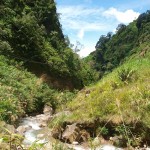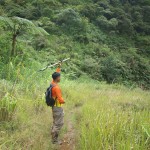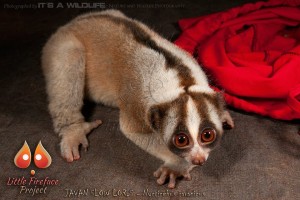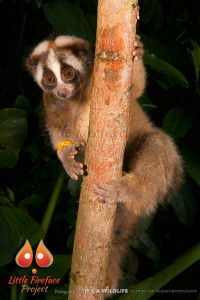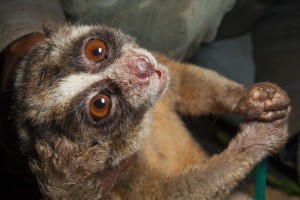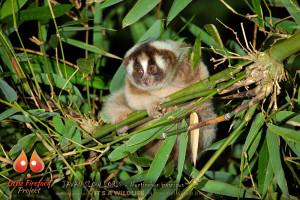In every family there is someone that is a little different. The one who doesn’t quite fit in and likes to spend time doing their own thing and taking the road (or tree) less travelled. You know, the traveller of the family, the vagabond. Well, we have not one, but two loris family members just like that!
Several nights a week here at the Little Fireface Project field site we take GPS locations of our radio-collared lorises. Most of our lorises have an area that they favour and we usually know which region we will locate them.
I say usually, because, just like most families, there is always one (or two)
As we continue monitoring lorises as part of our ‘Javan slow loris’ dispersal study, we find the odd loris doing odd things. Take Api, our ‘Fire Girl’, for example; she was happily foraging and sleeping in an area located at 1350 metres above sea level, until one day we could not track her signal very well at all. We went up and down the mountain for what felt like 100 kilometres (probably more like five) with the ‘pings’ of the radio tracking receiver becoming weak, then strong and then weak again. We could NOT find her anywhere, which is always a little bit of a worry to us, as we like to know the lorises are safe and well. The very next day, during the day, our tracker Dendi and a volunteer went out to see if they could find Api whilst she slept. After a steep climb through the agroforest, and the radio receiver signal getting stronger and stronger, they had success! There she was, sound asleep, on the top of the hill oblivious to the worry she had caused. Api had travelled so far up the hill that it was a surprise to all of us. The following week she had moved even further up to 1584m above sea level, covering a total distance of at least 2.6km to get from the football field to her new home.
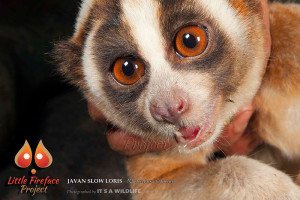 A few weeks later, our handsome boy, Mo, decided he might like to try a vacation too!
A few weeks later, our handsome boy, Mo, decided he might like to try a vacation too!
So why did the lorises move so far up the hill? Was there too much food competition, were the single lorises down the hill just not ‘cutting it’ in the looks stakes or were our travellers being pushed out by other individuals?
Studying the dispersal of the Javan slow loris will hopefully shed some more light on why, how and when the lorises do disperse.
We will monitor Api and Mo closely to see if their relocation is a permanent one or whether they were just checking out a new area for future reference. We have also welcomed many new animals to our dispersal study;
Kiara– the risky lady- found wandering on the ground of someones farm in the day!
Maya– the quiet beauty- named by our friends at Shaldon Wildlife Trust
Cabe– the aggressive boy- possibly the son of Sibau, will he travel far? or is he a mommas boy?
Dali– the little ladies man- often seen with Tereh and a very handsome little boy
Stay tuned for more vagabond adventures!

